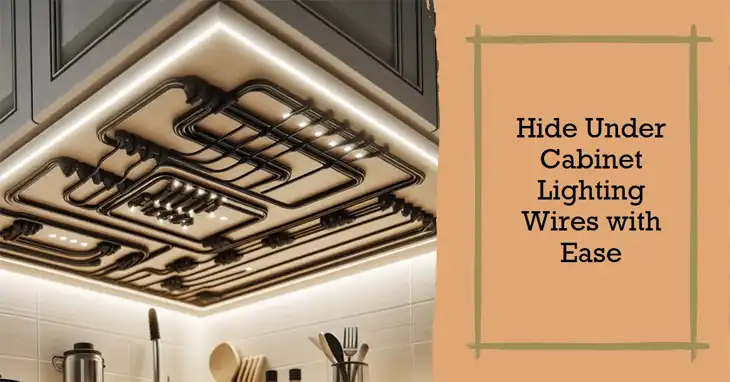How To Install Over The Range Microwave Without A Cabinet?

Struggling to install an over-the-range microwave without a top cabinet? You’re not alone. Many homeowners face this challenge, but there are creative solutions to make it work.
When it comes to installing an over-the-range microwave, the standard installation typically involves mounting the appliance to the underside of an upper cabinet.
However, if your kitchen layout doesn’t include an overhead cabinet, the installation process can become more complicated.
In this blog post, we’ll explore the best practices and alternative options to securely install your microwave without a top cabinet.
How to Install an Over-the-Range Microwave Without a Cabinet: A Step-by-Step Guide
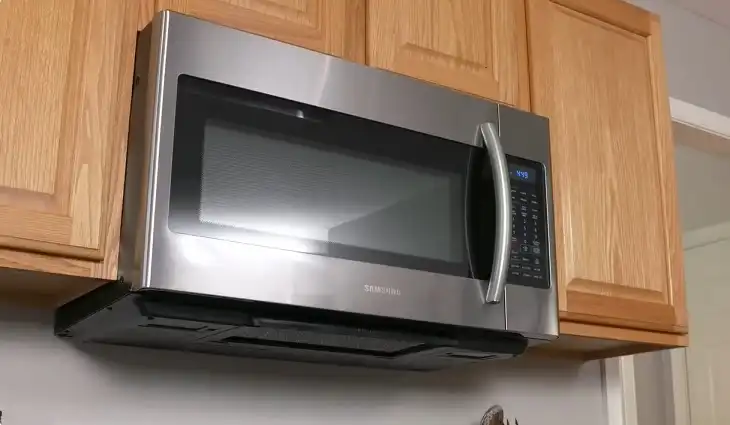
Installing an over-the-range microwave without a cabinet might sound tricky, but it’s totally doable with the right approach. Whether you’re renovating your kitchen or just upgrading your appliances, here’s how to get that microwave securely in place.
Tools and Materials You’ll Need:
- Microwave mounting kit (usually comes with the microwave)
- Stud finder
- Tape measure
- Level
- Drill with bits
- Toggle bolts or masonry anchors
- Screwdriver
- Pencil or marker
- Masking tape
- Assistant (optional but recommended)
Step 1: Choose the Right Location
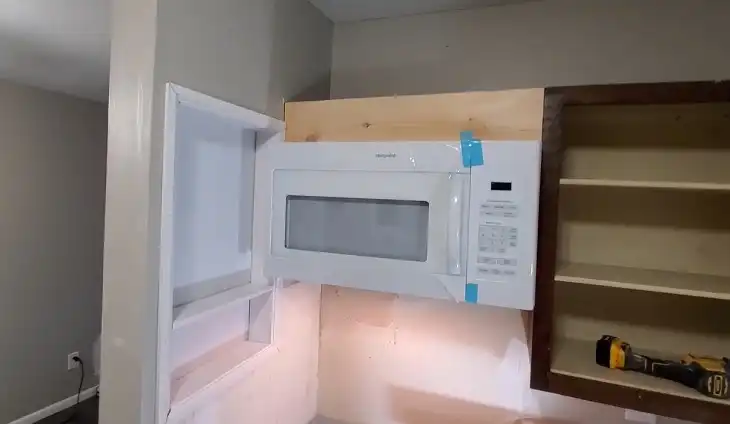
Before anything else, pick the perfect spot for your microwave. Make sure it’s near an electrical outlet and at a comfortable height above your stove or cooktop. Ideally, the bottom of the microwave should be at least 30 inches above the cooking surface.
Step 2: Locate the Wall Studs
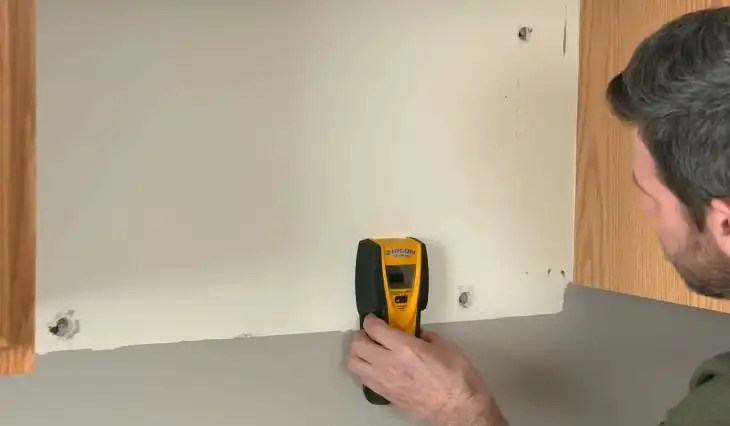
Use a stud finder to locate the wall studs where you’ll be mounting the microwave. Mark the positions with a pencil. If the studs don’t align with your microwave’s mounting bracket, don’t worry—you can use toggle bolts or masonry anchors to secure it.
Step 3: Position the Mounting Bracket
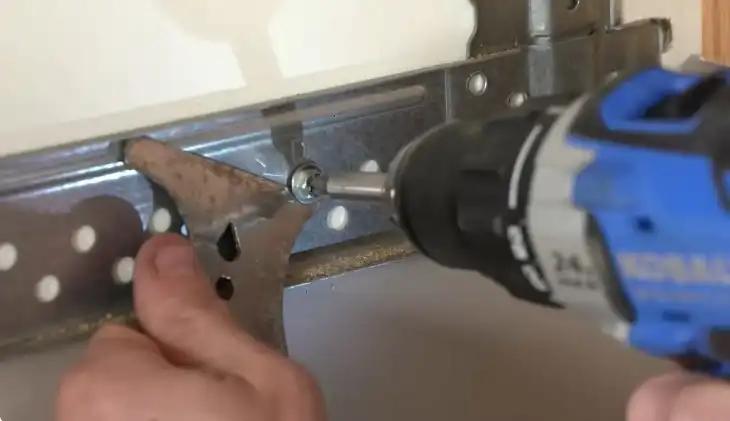
Take the microwave’s mounting bracket and hold it up against the wall where you want the microwave to go. Make sure it’s level. Use a pencil to mark where the screws will go based on the stud locations or where you’ll need to use toggle bolts.
Step 4: Drill Holes for the Mounting Bracket
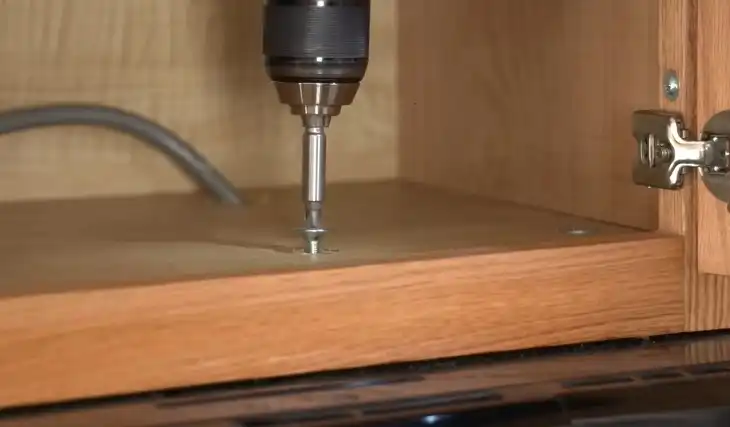
Drill pilot holes into the wall at the marked spots. If you’re drilling into studs, use a wood bit. If you’re using toggle bolts, make the holes slightly larger to accommodate the bolt size.
Step 5: Attach the Mounting Bracket

Align the mounting bracket with the pilot holes and secure it to the wall using screws or toggle bolts. Make sure it’s firmly in place—this bracket will bear the weight of your microwave, so it needs to be solid.
Step 6: Prep the Microwave

If your microwave has a template for drilling holes or cutting out sections of the wall, use it now. This is typically for venting or running electrical wires. Mark the areas and make the necessary cuts or holes.
Step 7: Lift and Hang the Microwave
This is where an assistant can really help. Carefully lift the microwave and hook it onto the mounting bracket. Make sure it’s secure and aligned properly.
Step 8: Secure the Microwave
Once the microwave is on the bracket, open the microwave door and look for the mounting screws inside the microwave cavity. These screws will secure the microwave to the top of the bracket. Tighten them with a screwdriver.
Step 9: Connect the Power
Plug the microwave into the electrical outlet. If it requires hardwiring, you might want to hire an electrician unless you’re confident in handling electrical work.
Step 10: Test the Microwave
Turn on the microwave to ensure it’s working properly. Test all the functions and make sure it’s stable on the wall. If everything looks good, you’re done!
Installing an Over-the-Range Microwave Without a Cabinet: The Possibilities
For over-the-range microwaves, the top cabinet plays a crucial role in providing the necessary support.
Microwaves can be quite heavy, often weighing 50 pounds or more. The upper cabinet helps distribute the weight and keep the microwave securely in place.
Without a cabinet above, the microwave would rely solely on the wall bracket for support.
This configuration is generally not recommended, as the wall bracket alone may not be sufficient to safely hold the weight of the appliance.
Exploring Alternative Mounting Solutions
If your kitchen layout doesn’t include an upper cabinet above the range, don’t worry – there are still several options you can consider to properly install your over-the-range microwave.
1. Building a Custom Shelf
One effective solution is to construct a sturdy, custom shelf between the adjacent cabinets. This shelf can provide the necessary support to mount the microwave. To build the shelf, you’ll need to:
- Measure the space between the side cabinets and cut a piece of plywood or other suitable material to fit the opening.
- Attach the shelf securely to the wall, ensuring it’s level and properly supported by wall studs.
- Consider adding additional bracing or supports, such as diagonal pieces, to reinforce the shelf and prevent sagging under the microwave’s weight.
2. Installing a Supported Shelf Above
Another option is to create a shelf above the microwave location, rather than directly underneath it. This approach allows you to mount the microwave to the bottom of the shelf, with the shelf itself being securely attached to the wall.
- Measure the desired height and width for the shelf, making sure it can accommodate the microwave’s dimensions.
- Attach the shelf to the wall, ensuring it’s level and properly secured to the studs.
- Follow the manufacturer’s instructions to mount the microwave to the bottom of the shelf.
3. Attaching to the Side Cabinets (Not Recommended)
In some cases, homeowners may attempt to attach the microwave directly to the side cabinets.
While this can work, it’s generally not the preferred method, as the side cabinets may not be designed to bear the full weight of the microwave. This approach can also be more challenging to execute properly and securely.
If you choose this option, be sure to use the appropriate hardware, such as heavy-duty screws or brackets, and ensure the side cabinets are firmly anchored to the wall.
Preparing for Installation
Regardless of the mounting solution you choose, it’s crucial to properly prepare the wall before installing the microwave. This includes:
- Locating the wall studs and marking their positions
- Drilling pilot holes to ensure a secure attachment
- Following the manufacturer’s instructions for the specific microwave model
Considerations for Ventilation
If your over-the-range microwave is also intended to serve as a range hood, ventilation becomes an important factor. Without an upper cabinet, the microwave may not vent as efficiently as it would with a cabinet in place.
In such cases, you may need to explore alternative venting solutions, such as installing ductwork or a custom vent system. Consult with a professional to ensure your microwave is properly ventilated and meets all relevant building codes and safety standards.
Conclusion
Installing an over-the-range microwave without a top cabinet can be a bit more challenging, but with the right approach, it’s certainly possible.
By exploring solutions like custom shelves, supported shelves above the microwave, or even carefully attaching the microwave to the side cabinets, you can find a secure and functional way to mount your appliance.
Remember to always follow the manufacturer’s instructions, pay close attention to weight-bearing capacities, and consider ventilation requirements if your microwave is serving as a range hood.
With a little creativity and attention to detail, you can successfully install your over-the-range microwave even without an upper cabinet.
Frequently Asked Questions
1. Do You Need A Cabinet To Install An Over The Range Microwave?
Technically, you don’t strictly need a cabinet to install an over-the-range microwave, but it is highly recommended. The upper cabinet provides critical structural support to securely hold the weight of the microwave, which can often be 50 pounds or more.
Without a cabinet, the microwave would need to be mounted solely on the wall bracket, which may not be sufficient to safely support the appliance.
While there are alternative solutions, such as building a custom shelf, most manufacturers design these microwaves with the assumption that they will be installed beneath an upper cabinet.
2. Can You Install An Over The Range Microwave Without Venting?
Yes, it is possible to install an over-the-range microwave without external venting. Many of these models are designed as recirculating microwaves, which means they do not need to be vented to the outside.
Instead, they have a charcoal filter that helps remove odors and grease from the air, and then recirculate the air back into the kitchen.
As long as the microwave is not being used as a range hood, it can be installed without the need for ductwork or an exterior vent.
3. Can You Put An Over The Range Microwave On A Shelf?
While it is possible to mount an over-the-range microwave on a shelf, it may not be the ideal solution. The underside of these microwaves is typically not designed to be flat, as they are meant to be installed underneath a cabinet.
Mounting the microwave on a shelf could create stability and alignment issues, and the shelf may not be able to adequately support the weight of the appliance.
If you do choose to use a shelf, it’s important to ensure it is sturdy, properly secured to the wall, and can safely bear the weight of the microwave.
4. Where Do You Put A Microwave Without Counter Space?
If you don’t have enough counter space for a standalone microwave, there are several alternative locations you can consider. One popular option is to install the microwave in the pantry, either on a shelf or mounted to the wall.
This keeps the microwave out of the main kitchen area but still within easy reach. Another option is to place the microwave on a rolling cart or stand that can be moved around as needed.
Some homeowners also get creative by integrating the microwave into a cabinet or wall unit, maximizing their available space.
5. How Do You Install A Microwave Without A Cabinet?
If you don’t have an upper cabinet to mount an over-the-range microwave, you can still install it by creating a custom shelf above the appliance.
To do this, you’ll need to measure the space between the adjacent cabinets and construct a sturdy shelf that can support the weight of the microwave.
The shelf should be securely attached to the wall, ideally into the wall studs, to ensure it can safely hold the microwave in place.
This approach provides the necessary structural support without relying solely on the wall bracket that comes with the microwave.
How To Install Over The Range Microwave Without A Cabinet?





